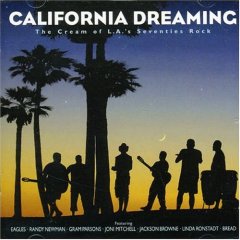Dagueneau, the Taste of an Icon
My relationship w/ wine has yielded very few regrets. In my life, I most closely associate regret w/ things that I didn’t do, as opposed to the stupid things that I’ve tried to do and failed. Chalk ‘em up to experience. Never visiting the World Trade Center comes to mind immediately as regret, and I know that if I dig deeper there’s certain to be a laundry list that I’d prefer not to delve into. In terms of wine, I’d like to think that if I have the desire and direction to do something, I’ll do it. Unfortunately, meeting the irrepressible Didier Dagueneau is no longer a possible aspiration, and that is where regret has found me. I have no tales of the person to share, so all I am left with is the image I get when I taste his wines.

Executive Wine Seminars put together a fabulous tribute tasting for Dagueneau that spanned vintages from the year 2000 through 2006. While I’ve tasted plenty of Didier’s singular Pouilly Fume wines, I’d never sampled his Buisson Renard, Silex and Pur Sang vineyards in juxtaposition. Not only did I jump at the chance to attend, I scoffed at Howard Kaplan’s (of said EWS) suggestion that I’d be more interested in a ’05 Chateauneuf du Pape horizontal. While several producers in Chateauneuf have collectively raised the bar for what Grenache is capable of, how often does one man transcend an appellation and a grape variety?
Onto the wines:
The first flight began w/ a ’00 Silex that immediately stuck out as a product of a botrytis inflicted vintage. One of the deepest golden colored Sauvignon Blancs of the flight, the scents reminded me of dry Sauternes, w/ saffron, bee pollen, honey and wilted flowers filling out the nose. Atypical, yet affable in its palate coating flavors that flowed like a running riverbed over a pebbly surface, ending w/ moderate length. The ’01 Silex was the smokiest, most flinty expression of the cuvee that we’d had all night. The Mosel Riesling like perfume of smoky slate, damp earth and crushed stones turned sinewy in the palate. An enveloping tide of saline, lime candy and macadamia nut flavors rocketed through the cheeks, driving the salivary glands to flood the mouth like tide pools. The consistent theme for the evening on top Dagueneau cuvees was typified in their persistence, and this ’01 was a case and point. This Silex was simply an outrageous tactile experience that has to be tasted to be believed.
We then moved on to the ’02 Pur Sang, which was a different animal altogether. The almost impenetrable mineral core could only be likened to climbing a rock wall w/ your tongue. This was all about raw power, energy and length, yet still left me w/ the feeling that bottle age would further delineate its flavors. Following that up w/ the Silex of the same vintage elucidated how Didier’s wines vary from parcel to parcel. A thick, layered wine, full of glycerin and profound flavors in the shape of peach, honeysuckle, sunflower seed and passion fruit notes. The textures were exotic, as they turned almost chewy in their opulence, yet I slightly preferred the exuberance and verve of the Pur Sang in this particular vintage. The flight was capped off w/ a ’95 Silex, which showed its age. Tiring, w/ oxidized characteristics buffered by a nutty, creamed corn like element in the nose. In spite of the advancement demonstrated by the nose, the palate still had an extra gear left, typified by an electric kick that kept the finish alive.
The group of ‘03s would have been fascinating to taste, considering the irregularities of the vintage, yet the EWS team was hijacked at the last minute, baited and switched w/ additional bottles of the ‘05s (which we happily drank anyway). The ’04 Pouilly Fume has significantly deteriorated and continued to falter as it aired. The classic oyster shell and lean lemon flavors were still evident, yet its skeletal frame had given way to age. The ’04 Buisson Renard was a fresh, rip-roaring malic acid bomb, w/ a Chenin Blanc like nose of green tea, baked apple, hay and sea breeze notes. The texture of a green apple peel was almost palpable in the mouth, as its tingling acidity carried the mineral-laced flavors to a mouth watering close. In relationship to the previous two bottles, one can’t understate the qualitative jump made by the Pur Sang and Silex cuvees. Both were outrageously complex in spite of how lean ’04 was as a vintage, but the Pur Sang’s poise and focus ended up winning me over. The brightness of the fruit took hold in the mouth, incrementally building and expanding from cheek to cheek, yet it is still in its infancy & its flavors remained relatively unformed. The Silex served as the yin to the Pur Sang’s yang, w/ its idiosyncratic array of white pepper, musky tobacco and white currant flavors coming at you in an unbridled display. While wild and singular
 , I felt it lacked the relentless tenacity of the Pur Sang in this particular vintage.
, I felt it lacked the relentless tenacity of the Pur Sang in this particular vintage.The 2005’s had a bit better pedigree, as even the Pouilly Fume shone through w/ its snappy pepper, citrus and stone fruit flavors, beaming through the rock solid finish. The Buisson Renard was simply effusive, w/ its ostentatious perfume carrying along to the richness of the palate. Relative to the ’04, the ’05 Renard demonstrates more depth, intensity and persistence. My perception of Didier’s top cuvees shifted in ’05, as I found the Silex not only to be the better of the two, but the best of the show. The nose was absolutely hypnotic, as its kinky layered nose came at me in waves of quince, unsalted butter, chive and honeysuckle. There is an immediately powerful impression on the attack, revealing uncanny size and scope as it moves through the mouth. While the texture is so generous it borders on unctuous, the underlying vibrancy and reserve wraps the entire piece together. While I find it instantly compelling, its elements almost dizzy the senses and it may be prudent to cellar over the short term. The Pur Sang served as more of a classical interlude to the Silex’s crescendo, washing over the palate like a rising tide to the shore. The wine struck me as a visceral experience that comes off better in poe
 try than any feigned attempt at describing particular flavors. Its only flaw was that it was tasted alongside the Silex of the same vintage.
try than any feigned attempt at describing particular flavors. Its only flaw was that it was tasted alongside the Silex of the same vintage.We unfortunately finished things off w/ the 2006 vintage and I found it aloof by comparison to the rest of the bunch. The Pur Sang shuffled through some Viognier-like tones of golden flower and sweet peach, seemingly spruced up w/ a touch of residual sugar. The Silex, although unique, also failed to truly compel as I found its macadamia nut, lychee and hummus notes to be confused in their creamy, almost gelatinous textures that obscured any mineral definition. While neither wine was poor, they lacked varietal recognition and came off as blowzy compared to their older siblings. Whether or not this is a matter of vintage, raw age or stacked competition is difficult to say, but to be fair, ’06 was not without its fans.
Didier’s ’04 Jardin de Babylone capped off the evening w/ its tasty notes of brown sugar, over-ripe banana, papaya and apple peel. Thick, yet fresh in the mouth, w/ a nice sense of drive keeping the flavors defined to the finish.
I left the tasting w/ a few thoughts & questions regarding the tasting and the group’s discussion:
· Each vintage shone through the wines transparently. Whether or not you appreciated the botrytis of ’00, the angularity of ’04 or the exoticism seen in the ‘06s is up for debate, but Dagueneau never tried to mask the weather.
· I like the Pur Sang Vineyard better than the Silex.
· I like the Silex Vineyard better than the Pur Sang.
· See point one for further clarification on points 2 and 3.
· I can’t emphasize enough what remarkable feats these are for dry white wine. The definition of the variety is forced to become an evolving document because of Didier’s wines.
· It is tough to summarize the ‘house style’ as each wine takes different shape from the next. That being said, I think it is fair to say that most of them have a sort of enveloping severity to them that is almost indescribable. There are some classic elements of Pouilly Fume, some white Bordeaux & some sauvage…they are a powerful ballerina w/ a razor sharp shave.
· Do any other Sauvignon Blancs remind you of Didier’s?
· Do any other Pouilly Fumes remind you of Didier’s?
· If the answer to the previous two points is no, then we can’t complain about the price, because there is no comparison. If the answer is yes, I’d love a bottle.
· Who in the wine world (old or new) has reshaped your vision as to what a varietal and/or appellation is capable of?
Wine Rating
’00 Silex 89
’01 Silex 95
’02 Pur Sang 95+
’02 Silex 94
’95 Silex 76
’04 Pouilly Fume 71
’04 Buisson Renard 91
’04 Pur Sang 96
’04 Silex 95
’05 Pouilly Fume 92
’05 Buisson Renard 93+
’05 Pur Sang 95
’05 Silex 98
’06 Pur Sang 90+
’06 Silex 91+
’04 Jardin de Babylone 89



















